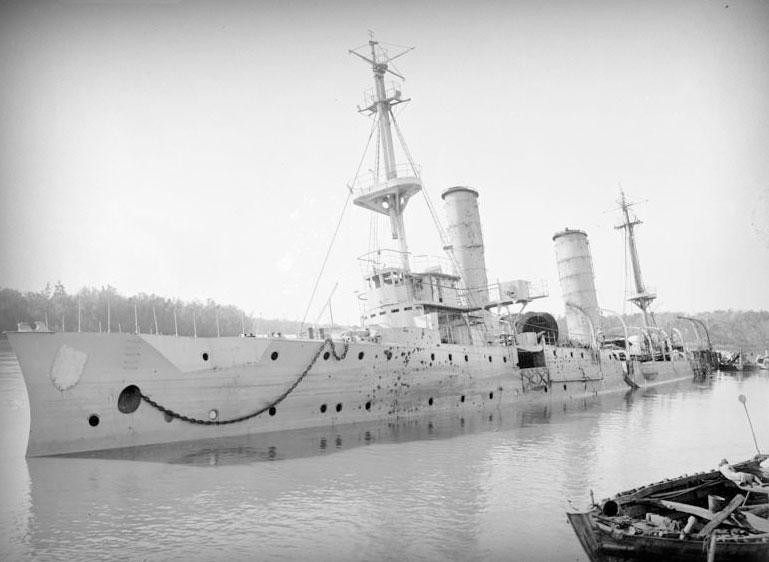In 1915, he earned a Distinguished Service Order for his actions July 6 and 11 as a wireless operator for the Royal Naval Air Service in the remote Rufiji River delta in German East Africa.
Immediately after war was declared, German colonies in East Africa determined to draw off Allied forces and supplies from Europe to Africa and make Germany the dominant colonial power in Africa.
In September 1914, the light cruiser Königsberg sank HMS Pegasus, helpless at anchor in Zanzibar Harbour, which was a British protectorate off the east coast of Africa.
An engine failure interrupted Königsberg’s plans for further attacks. The British located the cruiser, which had pulled into a channel in the Rufiji River delta while spare parts were sent overland.
In the early morning of July 6, the British ships Mersey and Severn stole into the branch of the river where Königsberg was moored and opened fire. During the firefight, five more British vessels joined the fray.
Along with them were two airplanes; one carried bombs, the other an observer. The planes were to spell each other off over 13 hours, during which they had flown at least 950 miles.
One after the other, the planes broke down. The top of the German ship’s masts were visible, but the combined British force was unable to sink it.
“The various ships, whalers, tugs, etc., anchored for the night off the delta and proceeded to their various stations for coaling etc. the following morning,” Vice-Admiral Herbert King-Hall reported to the Admiralty. “It was necessary to make a fresh attack on the Königsberg to complete her destruction.”
That attack came July 11, when the aircraft were again ready for service, with Flight Sub-Lieutenant Arnold as observer. “The observers in the aeroplanes, by their excellent spotting, soon got the guns on the target and hit after hit was rapidly signalled. At 12:50 it was reported that the Königsberg was on fire.”
During the action, Arnold’s plane was hit twice by enemy fire, but Arnold continued to send spotting signals and corrections to the British ships “until the very last minute when the plane had to be ditched in the Rufiji River.” Arnold and his pilot were rescued, reported the admiral.“Most serious risks have been run by the officers and men who have flown in this climate,” King-Hall wrote in his report on the Battle of the Rufiji Delta to the British Admiralty. The dangers included extremes of heat and cold and “bumps” during which the planes would rise or fall unexpectedly by as much as 250 feet as they rode the air currents.
“Regrettably,” the admiral later reported, “Arnold was accidently drowned March 20, 1918, in an airplane accident.”
Advertisement






















